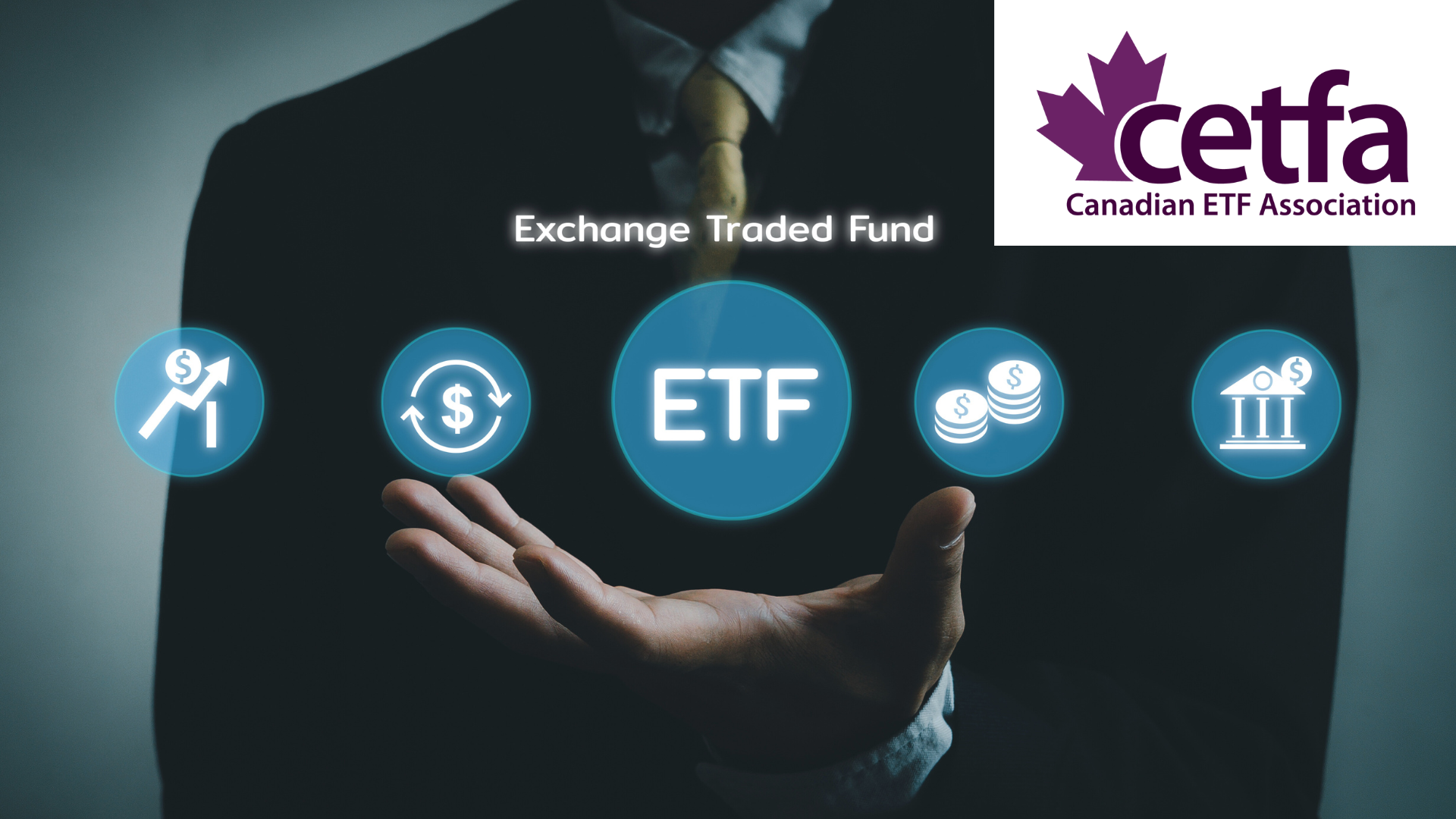
TSX ETF Investor Centre

Overview of ETF Market
In this video, Andrew Clee, VP of Product at Fidelity Investments, will provide an overview of the Canadian ETF industry.

Myths of ETFs
In this video, Thomas Grant, VP of ETF Capital Markets at TD, will debunk several of the ETF myths that continue to circulate.

What is an ETF and ETF Facts?
In this video, Kevin Prins, Managing Directoor, Head of ETF & Managed Accounts Distribution at BMO Global Asset explains what ETFs and ETF Fact Forms are. The ETF Fact Form is a valuable document that provides data points to be used in your evaluation of ETFs.

What is CETFA?
Welcome to the Canadian ETF Association and our new ETF video series. In this video, Pat Dunwoody, Executive Director of the Canadian ETF Association (CETFA), explains who CETFA is and what they do.

Canadian Lifecos – Well-Positioned for Higher Rates
Canadian life insurance companies (“lifecos”) have significant exposure to various macroeconomic factors including interest rates, equity markets and corporate credit. Interest rates typically have the biggest impact on the sector as lifeco reserves and earnings have historically had a high degree of economic sensitivity to changes in interest rates. This is the result of a duration mismatch between a lifeco’s insurance liabilities and its invested assets. Most life insurance products result in a long duration liability for the insurer that writes the policy. This occurs since buyers of life insurance policies are often in their early 40s and are therefore expected to live for several decades. A lifeco’s invested assets, on the other hand, typically have a shorter duration profile. This mismatch means that lifecos are generally helped by rising interest rates and hurt by declining interest rates.

Safety in Tech?
The tech sector (S&P 500 Info Tech Index) has outperformed the broader market and all other sectors year-to-date, with a 21.5% total return vs 7.0% for the S&P 500 Index, despite macro headwinds and volatility in the bond market due to recent bank failures. Many investors are wondering whether the tech sector, particularly mega cap tech, is the new safety trade.

Canadian Banks – Stability in Good Times, Bad Times
The global banking industry has once again been thrown into turmoil with the recent regional bank failures of Silicon Valley Bank, Silvergate Capital, and Signature Bank in the U.S., as well as the takeover of Credit Suisse by UBS Group at the behest of regulators in Switzerland. While there were specific issues impacting each of these entities, these recent failures have highlighted the risks associated with the rapid increase in overnight interest rates over the past year as central banks around the world have moved swiftly to tighten policy in response to high inflation. These risks include declining asset values (i.e. bond investments) as a result of higher rates across the yield curve, particularly for banks that run a duration mismatch on their balance sheets, as well as the potential for banks to quickly lose deposits as depositors search for higher yields in investment products and/or flee in the face of a real or perceived banking crisis.

Investment Solutions for Market Uncertainty
In this article, we discuss several strategies that may help investors navigate today’s market uncertainties

Europe - The Worst May Be Behind Us
European equity markets have strongly outperformed the U.S. over the past three months in both U.S. dollar and local currency terms. The magnitude of the recent outperformance is unprecedented in the last 15 years, with the Euro STOXX 50 versus S&P 500 materially breaking above its 100-week moving average for the first time since the Great Financial Crisis, except for a brief period in first half of 2015 when the European Central Bank (ECB) launched Quantitative Easing in January. The 100-week moving average is a trend indicator, and the break above this trendline could be an indication that Europe’s structural underperformance has come to an end. We believe several factors have led to Europe’s recent outperformance and should continue to drive this trend.

2023 Outlook: Pause or Pivot and the Recession Obsession
We expect 2023 will be another challenging year, especially in the first half as the market continues to price in recession scenarios. While inflation has begun to decelerate, it remains elevated and there is still some uncertainty in the deceleration path. The rapid pace of monetary policy tightening has been a headwind for risk assets but the expected moderation in rate hikes should become less of an overhang as the effects of recent policy decisions begin to reflect in the economic data. As the year unfolds, the market’s ability to price in a mix of growth, inflation, and recession risk should become more clear and provide support for risk assets. As a result, we believe investors should remain defensive in this volatile inflationary market regime.
